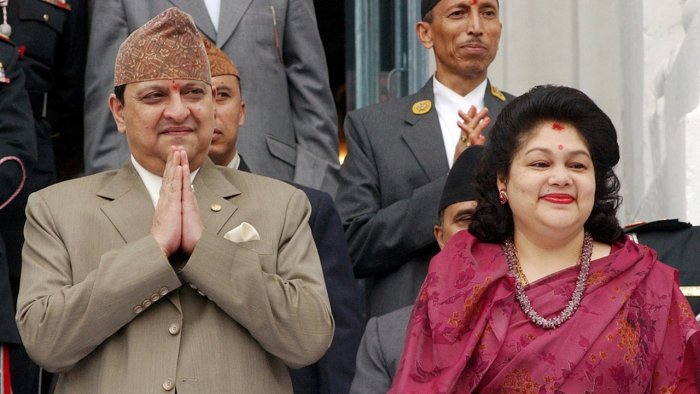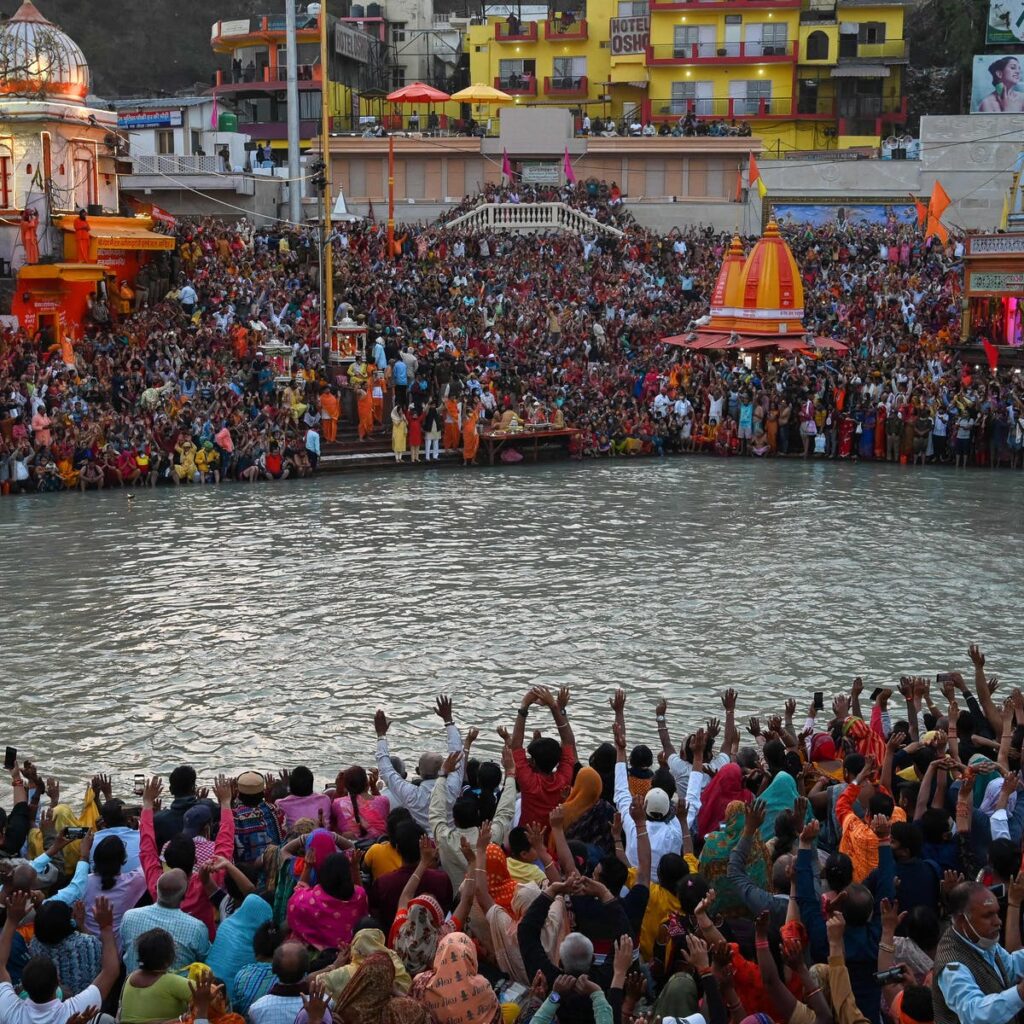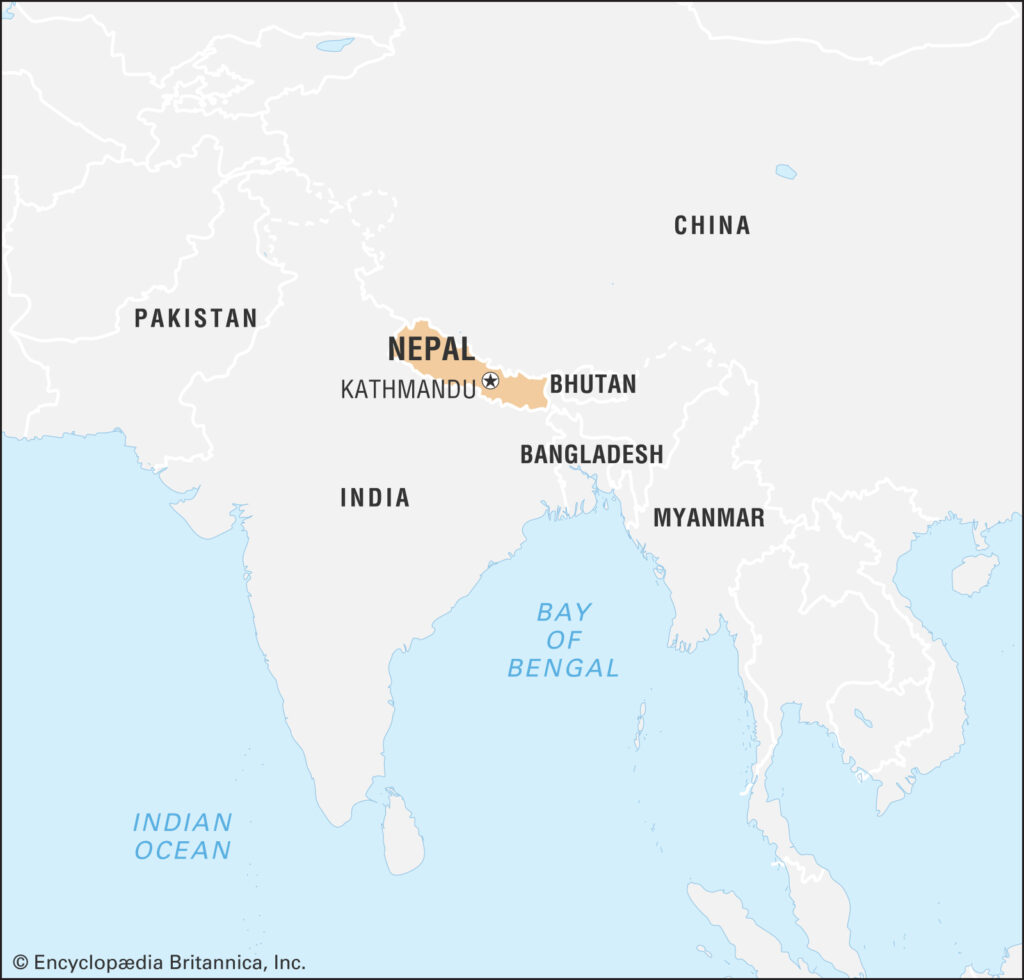COVID and the King
Why would the former king of Nepal risk his life to perform rituals in India? Hindu nationalism may provide an answer.

(The former king and queen of Nepal, Gyanendra Shah and Komal Shah. Photo source: AFP File Photo)
On April 11 of this year, a car pulled up in front of a Hindu temple in Haridwar, India.
Out stepped the former king of Nepal.
Nepal’s ex-king does not appear often in public. Though he was not officially exiled or formally limited from public life following his forced abdication in 2008, Gyanendra Shah (now 73) mostly lives quietly at his private residence in Kathmandu. He opens his gates to his supporters on his birthday and on the national holiday of Vijaya Dasami, but the world’s last Hindu king rarely grants interviews or attends events.
This year, though, he was an invited VIP guest at the Kumbh Mela, a festival where millions of Hindus bathe in the sacred River Ganges. He and his wife, former-Queen Komal, had made an exception to their normal reclusiveness, and flown to India a day ahead of the designated Shahi Snaan— “royal bath” day.
Upon their arrival, the Shahs went to the Dakshinkali Temple. A small group of journalists waited for them near a red publicity backdrop. Gyanendra looked relaxed, a half-smile across his face. A red tika-mark on his forehead marked him as a devout Hindu; a traditional topi hat marked him as a proud Nepali.
As the journalists looked on, Nepal’s former king received his official welcome from orange-swathed holy men of the Niranjani Akhad (one of thirteen groups who organize the Kumbh Mela). They draped one another with flower garlands and made small speeches. Gyanendra then declared that “Nepal and India share the same culture and traditions.” The holy-men suggested that Gyanendra was the Vishwa Hindu Samrat, which could be translated either as the “king of the world’s Hindus,” or the “Hindu king of the world.” The head holy-man of the temple, Kailashanand Giri, proclaimed that “the only Hindu nation in the world is Nepal.”
As he started to speak, Kailashanand Giri’s cloth pandemic mask dangled from one ear; he soon pulled it off entirely to talk more easily into the microphone. Most of the other holy men wore cloth masks around their chins. Gyanendra’s own face was bare.
On April 12, Gyanendra and Komal Shah bathed in the Ganges, alongside an estimated 3.5 million fellow pilgrims. They spent the rest of the week in India, and flew back to Nepal on Sunday, April 18.
The following Tuesday, the former king and queen were both diagnosed with COVID.
***
The Kumbh Mela festival this year drew together millions of people right at the beginning of India’s devastating Delta wave. Despite health precautions, thousands of pilgrims were exposed to illness and took the virus home with them. There may have been hundreds if not thousands of COVID-linked deaths among participants, including a politician from the ruling Bharatiya Janata Party (BJP) and a prominent holy man who was instrumental in the Kumbh Mela’s own planning. Without contact tracing or effective data-collection, the true toll cannot be fully known.

(2021 Kumbh Mela festival. Photo source: Prakash Singh for Getty Images)
The former king and queen of Nepal both ended up hospitalized for weeks following their COVID diagnosis. Former-queen Komal spent seven days in intensive care.
Fortunately, they both survived and were discharged in May to finish recuperating at home. In a public statement to the nation in October, during Nepal’s Dasai festival, Gyanendra seemed entirely recovered.
But the Shahs’ trip to India, and their brush with COVID, raises an important question: Why would a reclusive pair of former royals decide to risk their health for a pilgrimage?
And further, why would Mela-organizers in India even want to invite the former king and queen of Nepal?
In order to answer these questions, we need to understand what kingship means to modern nationalism in Nepal and India (the world’s two Hindu-majority nations).
And we need to understand how Gyanendra and Komal Shah came to be the former king and queen of their country.
***
Hindu kingship has a long and complex history in South Asia.
Long before the lines were drawn to create the borders of modern India and Nepal, there were shifting kingdoms all over the subcontinent. Some Hindu rulers (rajas) controlled vast territories; others presided over a single city or valley.
Hindu rajas were both political and ritual figures. Most claimed their right to rule based on their special ritualized relationship with a Hindu deity, and most received special ritual consecration. They endowed temples and supported priests; they appeared in public festivals, and sometimes had access to secret powerful spaces or rites. Some rajas controlled extensive armies and administrative apparatuses; others wielded far less practical power.
The legacies of Hindu kingship diverged, however, between the lands that would become India and Nepal.
In India, Hindu kingship waned. Under Islamic rule (starting in the 1200s with the Delhi Caliphate) and then under British colonial rule (starting in the 1700s), Hindu rajas were progressively displaced. Some lost territory; some went into exile. Some nominally stayed kings, but ended up relegated to purely ceremonial roles.
After independence in 1947, all of India’s remaining royal territories were folded into the secular state. Royal families were briefly given stipends, but all official titles and privy-purse payments were cut off in 1971. Some of India’s former Hindu kings (like the Raja of Singrauli) became hoteliers or businessmen. A few become politicians, such as Madhavrao Scindia of Gwalior, who served nine terms in the Indian Parliament. Many continue to participate actively in local rituals: the raja of Puri inaugurates his city’s Jagannath festival, while the raja of Varanasi is an important patron of all city-wide holidays. These ritually active “royals” hold local social importance, but no official titles or political roles.
In Nepal, by contrast, the modern nation-state developed entirely around the Hindu monarchy. In the mid-1700s, Nepal became a single polity for the first time when an ambitious young raja from Gorkha conquered neighboring territories throughout the Himalayan foothills. His descendants, the Shah dynasty, stayed on the throne for the next 240 years. In the 1800s, the Shah kings were sidelined from politics, when a succession of child-kings were relegated to ceremonial roles while powerful prime ministers ran the government.

(Source: Britannica)
In the mid-20th century, the power of Nepal’s kings expanded once again. In 1950, King Tribhuvan collaborated with democracy activists to overturn the reigning regime and ascend to a newly powerful role. Tribhuvan’s son and grandson consolidated full control of the nation’s government, running Nepal as a royal autocracy from 1960 until 1990, when King Birendra stepped back into a more moderate role as an active but predominantly ceremonial head of state.
Throughout the modern period, Nepal’s kings were at the center of the nation. In some ways, the king was the nation. Nepal’s rupee notes showed the king’s face, school curricula taught the king’s biography, the national anthem lauded the king, and the king’s birthday became a national holiday. Throughout the year, the king would perform religious rituals in his capacity as head of state. The Nepali word sarkar meant both “government” and “[his] majesty.”
At the turn of the millennium, Nepali nationhood was inextricably bound up with Hindu monarchy. Yet, within less than a decade, the entire institution collapsed.
***
The last king of Nepal, Gyanendra Shah, came to the throne in 2001 under the worst possible circumstances.
Gyanendra was the younger brother of King Birendra, one of the longest-ruling kings in Nepali history. Birendra and his wife, Queen Aishwarya, had been ruling for nearly thirty years, since 1972. Prince Gyanendra had lived his whole life as a palace insider and confidant to the king, but as third in line to the throne (after his brother’s two adult sons), he ought never have expected to become king himself.
Then on June 1, 2001, twenty-five members of the extended royal family gathered for dinner at the Crown Prince’s residence. That gathering became the site of a horrifying mass shooting. Fourteen royals were shot. Ten died, including the king, queen, and all three of their children. The king’s eldest son and heir to the throne, Crown Prince Dipendra, was named in the official report as the shooter.
Prince Gyanendra was not present at the dinner. His wife Komal had attended without him, and survived—though she was shot through the left lung, inches from her heart.
Now, suddenly, Gyanendra and Komal were the new king and queen of Nepal.
The public was grieving, angry, and traumatized. Vast numbers of Nepalis rejected the official report on the palace shooting and instead placed blame for the tragedy on their new king.
At the time, the country was five years into an armed guerilla insurgency in the western hill regions, and the central government in Kathmandu was riven with infighting. The political situation worsened in the months and years immediately following the royal murders, and, in 2005, King Gyanendra decided to take the government into his own hands. He dissolved the existing administration, appointed himself Chairman of a council of ministers, and attempted to rule directly.
That decision managed to unite every faction in the country against him.
In April 2006, a little over a year after he took direct control of the government (and just over five years after he became king), Gyanendra’s opponents took to the streets. All over Nepal, massive demonstrations paralyzed the country for nearly a month. King Gyanendra capitulated.
An interim government took over and immediately set about stripping Gyanendra of every form of power. They excised him from all government work, pulled his budget, erased him from the currency, and wrote a new king-free national anthem. They disinvited him from all public rituals that had been central to the Shahs since the 1700s.
In May 2008, a new legislature voted to end the monarchy.
The now-former king and queen left the palace in June 2008 and took up lives as private citizens. They continue to live quietly in downtown Kathmandu, a mile north of the palace. Former king Gyanendra’s public life is minimal—but he does periodically go to weddings, temples, and the occasional public ritual (where he hangs onto a vestige of his old identity).
***
In the early 2000s, when King Gyanendra was deeply unpopular in Nepal, he was nevertheless extremely popular among Hindu nationalists in India.
For the past few decades in India, an increasing number of Hindus have located their national identity in a deep, ancient, Hindu past—a past they see as tarnished by conquests from non-Hindu outsiders (first Muslim, then British). These advocates want modern India to claim a strong and pure identity as a Hindu nation. This is the ideology of Prime Minister Narendra Modi’s BJP party, and it has been linked to a sharp rise in anti-Muslim hostility, policy, and violence.
For such nationalists, the disappearance of Hindu kingship from India was part of their broader national tragedy. They accordingly developed a nostalgic attachment to Nepal’s Hindu monarchy. They decried the dissolution of Gyanendra’s kingship in 2008 as a loss to world Hinduism.
Today, some would like to see him reinstated.
***
Which brings us back to Kumbh Mela in 2021.
Gyanendra Shah is, according to the reports of those who know him, a deeply devout man. He enjoys religious activities, seeks out religious specialists, and visits significant temples. He also appears to be a true believer in the significance of monarchy generally (and his family specifically) for Nepal. Nothing could feel better to him than an invitation to bathe in the holy River Ganges on the “royal” day and be celebrated by a group of holy men as the Vishwa Hindu Samrat—the king of the world’s Hindus.
For their part, the Indian holy men who invited the Shahs do not care much about Nepali politics or the Shah dynasty. Instead, they are invested in a vision of a post-secular Hindu India, a political order that includes the former king of Nepal while excluding India’s Muslim citizens. Kumbh Mela allowed both the former king and his hosts to act out their vision of how the world should be. It allowed them to perform Hindu nationalism through ritual gestures.
Gyanendra Shah’s participation in a “royal bath” reflected his past royalty, but it also renewed that royalty and extended it into the future. His presence at the Kumbh Mela suggested that he continued to be a unique and important person—someone valuable to Hindus even beyond Nepal’s borders. For his hosts, his presence suggested that Indian Hindus have more salient ties across borders than they do within the multi-religious modern nation.
Ultimately, the ritual presented the public with a vision of Hindu-ness and politics that does not match the current real-life political world where Hindu kings only exist in the past. But it did match the sentiments and aspirations of both the former king and those who invited him.
And that, as it turns out, seems to have been worth a life-threatening brush with COVID.
Anne Mocko is associate professor of Asian religions at Concordia College (Moorhead, MN), and the author of Demoting Vishnu: Ritual, Politics, and the Unraveling of Nepal’s Hindu Monarchy (Oxford University Press, 2016).